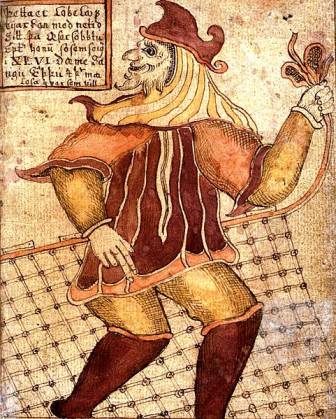Norse mythology has a lot of different gods, as well as a fair number of jötnar, the traditional enemies of the Aesir. However, seemingly with a one foot in each camp is Loki, the Trickster god, with more or less solid jötun roots, yet living among the gods in Asgard.
Loki is quite an enigma as the gods go, and I can’t say I always understand his motivation. The simple explanation for why he does what he does I guess could be that it’s just his fate. However, he does seem to enjoy being a source of mischief, and also good natured laughter.
Loki is often the instigator of bad things happening in various myths, but he also comes to the aid of the other gods more than once. Quick to let his more devious impulses, or possibly his jealousy rule his actions, he ends up being a major force for the downfall of the gods.
Loki Key Facts
| Parents | Farbauti (father) and Laufey (mother) |
| Partners | Angrboda, Sigyn and Svadilfari (a horse) |
| Siblings | Helblindi and Byleistr |
| Offspring | Fenrir, Jormungandr, Hel, Narfi and Sleipnir (yeah, Odin’s horse) |
| Tribe | Jötun or Aesir (living among the Aesir) |
| Old Norse name | Loki |
| Other names | Loptr, Hveðrungr |
| The God of | Mischief and Trickery |
| Ass. Animal | Salmon (due to his transformation) |
Name and Etymology
The etymology of Loki’s name is a subject of debate among scholars. While some have tried to associate it with the Old Norse word “logi,” meaning “flame,” this connection doesn’t seem to have a solid linguistic foundation. Also, there is a jötun who is named Logi, so having a second one named the same seems improbable to me. A more plausible origin can be traced to the Germanic root *luk-, which relates to things associated with loops, such as knots, hooks, closed-off rooms, and locks.
This association with loops and knots has led to intriguing interpretations of Loki’s character. Some suggest that Loki’s connection to knots and tangles might indicate his role in causing complications and entanglements. You find many names, or kennings like this in Norse mytholgy, basically alluding to or describing their personalities. That is partly why I believe in that interpretation as well, his name reflecting his nature.
This is further supported by the idea that Loki was believed to be the inventor of the fishnet, a tool made up of loops and knots. The term “loki” (or its variants like lokke, lokki, loke, luki) was also used to describe makers of cobwebs, such as spiders.
Another intriguing name associated with Loki is Hveðrungr, which can be translated as “roarer.” This name appears in various contexts, such as in reference to Hel, where she’s termed “hveðrungs mær”, (maiden/daughter of Hverdrung) and when speaking of Fenrir in the Völuspa.
Loki’s Kennings in Skáldskaparmál
- Son of Fárbauti and Laufey: This refers to Loki’s parentage, emphasizing his Jötun (giant) lineage.
- Brother of Býleistr and Helblindi: Acknowledging Loki’s siblings, though they are less prominent in the myths.
- Father of the Monster of Ván (Fenris-Wolf), the Vast Monster (Midgard Serpent), Hel, Nari, and Áli: Highlighting Loki’s diverse offspring, each of whom plays a significant role in Norse mythology.
- Kinsman and Uncle: A nod to his familial ties with the Aesir and his offspring.
- Evil Companion and Bench-Mate of Odin and the Aesir: This kenning underscores Loki’s complex relationship with the gods, being both an ally and a source of mischief.
- Visitor and Chest-Trapping of Geirrödr: Referring to a specific myth where Loki is captured and imprisoned by the giant Geirrödr.
- Thief of the Giants, of the Goat, of Brísinga-men, and of Idunn’s Apples: These kennings highlight various tales where Loki’s cunning and thieving nature come to the fore.
- Kinsman of Sleipnir: A reference to Loki’s indirect role in the birth of Odin’s eight-legged horse, Sleipnir.
- Husband of Sigyn: Acknowledging his loyal wife who stood by him during his punishment.
- Foe of the Gods, Harmer of Sif’s Hair: These kennings emphasize Loki’s mischievous and sometimes antagonistic relationship with the Aesir.
- Forger of Evil, the Sly God: Highlighting Loki’s cunning and often deceptive nature.
- Slanderer and Cheat of the Gods: Emphasizing his role as a trickster and deceiver.
- Contriver of Baldr’s Death: Referring to one of Loki’s most infamous deeds, the orchestration of the beloved god Baldr’s death.
- The Bound God: A nod to Loki’s eventual punishment, where he is bound beneath a venom-dripping serpent.
- Wrangling Foe of Heimdallr and of Skadi: Highlighting specific enmities with other figures in Norse mythology.
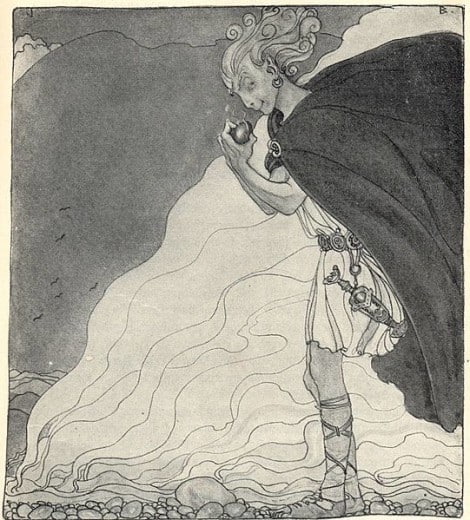
Loki’s Origins
Loki’s lineage is a subject of intrigue and some ambiguity within Norse mythology. He was born to Farbauti, who is recognized as a jötun (giant). However, the background of his mother, Laufey, remains a mystery. Ancient texts do not provide any real facts about her being a jötun or an Aesir, leaving her origins open to interpretation and speculation. As such, it’s not accurate to label Loki strictly as a jötun by birth, given the uncertainty surrounding Laufey’s heritage.
I personally lean towards Laufey being an Aesir goddess. Partly because one of his names if Laufeyson, after his mother rather than his father. This (to me at least) would only make sense if his mother was a goddess, and someone he would want to be associated with, more so than with his jötun father.
Loki’s relationship with Helblindi and Byleistr adds another layer of complexity. While they are often referred to as Loki’s brothers in the myths, there’s no definitive evidence in the ancient scripts that they share the same parentage. Their exact relationship and shared experiences, if any, remain shrouded in the mists of Norse lore.
Loki’s Family and Relationships
Loki’s relationships are as intricate as his character. His ties to both giants and gods make him a bridge between two worlds, often leading to conflict and intrigue.
Angrboda
With the giantess Angrboda, Loki fathered three infamous offspring: Fenrir, Jormungandr, and Hel. Their relationship was tumultuous, marked by their shared role in the eventual downfall of the gods.
Sigyn
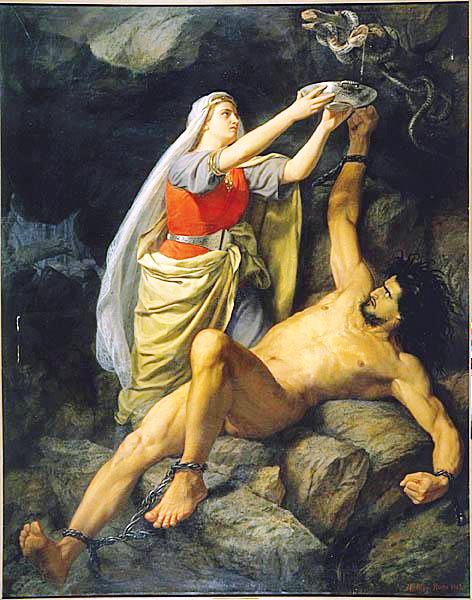
Sigyn, Loki’s loyal wife, stands as a stark contrast to Angrboda. Her devotion to Loki is evident when she stays by his side, holding a bowl to catch the venom that drips onto him after he’s bound by the gods as punishment. Their relationship showcases a softer side of Loki, revealing the depth of his character.
Fenrir
Fenrir, the wolf, is one of Loki’s most notorious children. His strength and ferocity are so feared by the gods that they bind him, leading to a prophecy where he breaks free and kills Odin during Ragnarok.
Jormungandr
Jormungandr, the world serpent, is another of Loki’s offspring with Angrboda. This massive serpent encircles the world, biting its tail, and is fated to battle Thor during the end times.
Hel
Hel, given dominion over the underworld, is a figure of both reverence and fear. As Loki’s daughter, she controls the fate of those who do not die in battle, ruling over the realm that bears her name.
Narfi
Narfi, Loki’s son with Sigyn, meets a tragic and grisly fate in the annals of Norse mythology. In a twist of events following the orchestration of Baldr’s death by Loki, the gods sought to punish Loki for his role. To do so, they turned Vali, one of Odin’s sons, into a wolf. In his feral state, Vali attacked and tore apart Loki’s son Narfi. The gods then used Narfi’s entrails to bind Loki, ensuring his punishment was both symbolic and severe. This act not only served as retribution for Loki’s deeds but also highlighted the intricate and often brutal nature of Norse myths.
Sleipnir
One of the most intriguing tales of confused parentage in Norse mythology involves Loki’s role in the birth of Sleipnir, the eight-legged horse. In a cunning scheme to prevent the giant builder from completing the walls of Asgard on time (and thus claiming the sun, the moon, and the goddess Freyja as his reward), Loki transformed into a mare. In this form, he lured away Svadilfari, the giant’s powerful stallion, ensuring the builder’s failure. From this union between Loki (as a mare) and Svadilfari, Sleipnir was born. Sleipnir, often described as the best of all horses, became Odin’s steed and is frequently depicted carrying the All-Father across the realms. This tale once again showcases Loki’s cunning and his willingness to go to great lengths, even changing his form, to achieve his goals.
Loki’s Roles And Responsibilities: The Dual Nature of the Trickster God
In the intricate web of Norse mythology, Loki emerges as a figure of profound complexity, often defying the conventional boundaries of hero and villain. His actions, driven by a blend of mischief, cunning, and a peculiar sense of justice, make him a character of unparalleled depth. As we delve into the tales that feature Loki, we’ll uncover the multifaceted roles he plays, revealing a god who is both a creator of chaos and a resolver of crises.
The Force of Chaos and Cunning
Loki’s essence is deeply rooted in chaos and cunning. His unpredictable nature often leads to situations that disrupt the order of things, but it’s this very unpredictability that makes him invaluable in resolving the very crises he instigates. The tale of Idunn and her apples exemplifies this: Loki facilitates Idunn’s abduction, causing a crisis among the gods as they age without her rejuvenating apples. Yet, it’s Loki’s cunning that also orchestrates her rescue, restoring balance to the realms. Similarly, his mischief in cutting off Sif’s hair leads to the creation of iconic artifacts like Thor’s hammer Mjölnir and Odin’s spear Gungnir. Through these tales, Loki’s role as an agent of chaos, but also as a creative force, becomes evident.
Duality: Between Good and Evil
Loki’s character embodies the duality of good and evil. While he often instigates trouble, he also plays a pivotal role in resolving it. In the story of the Otter’s ransom, Loki’s thoughtless act of killing a transformed dwarf leads to a crisis. Yet, it’s also Loki who takes responsibility, retrieving cursed gold as compensation. This duality is further highlighted in the tale of the fortification of Asgard. To prevent the gods from losing a bet, Loki takes one for the team, transforming into a mare to distract the giant’s stallion, leading to the birth of Sleipnir. These tales underscore Loki’s dual nature: he’s neither wholly evil nor purely good, but a blend of both, making him a unique and indispensable figure in Norse mythology.
The Embodiment of Balance
While Loki’s actions often lean towards mischief, they inadvertently bring about balance in the Norse cosmos. His deeds, whether causing strife or resolving it, are driven by a deeper sense of equilibrium. Even in his most mischievous acts, there’s an underlying intention to restore or maintain balance. The creation of iconic artifacts, the rescue of Idunn, and even the birth of Sleipnir all serve to restore a sense of order disrupted by Loki’s initial actions. In this way, Loki stands as a testament to the complexities of character and the intricate balance between chaos and order in the Norse myths.
Loki epitomizes duality. He’s neither wholly evil nor purely good. He’s a god of mischief, yes, but also one who can defend justice and right wrongs when the situation demands. His actions, whether causing strife or resolving it, are driven by opportunity, personal interest, and an innate sense of balance. In the grand tapestry of Norse myths, Loki stands out as a testament to the complexities of character and the blurred lines between right and wrong.
Depiction And Characteristics
Loki is often depicted as a handsome, if not slightly mischievous, figure. His charm and wit are as much a part of him as his propensity for causing chaos. In the myths, Loki’s personality is multifaceted. He’s capable of both great kindness and great treachery. His actions, whether helping the gods or betraying them, often stem from a place of personal interest or amusement.
Loki’s Symbols, Artifacts or Animals
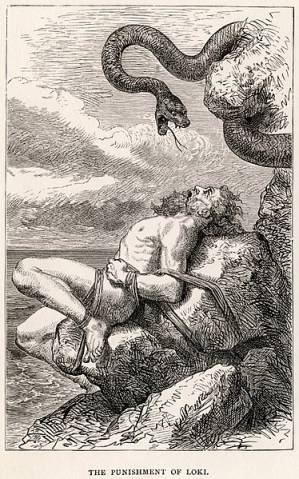
Loki doesn’t wield a famous weapon like Thor’s Mjölnir or Odin’s spear, Gungnir. However, he is associated with the salmon due to a tale where he transforms into one to escape the gods. This transformation and the subsequent chase by the gods play a crucial role in the events leading up to his binding and punishment.
Myths about Loki – Tales of Trickery and Redemption
Loki’s tales are a testament to his multifaceted nature, weaving a tapestry of mischief, redemption, and profound impact on the Norse cosmos. Let’s delve deeper into some of the most iconic myths surrounding this enigmatic god.
Fortification of Asgard and Birth of Sleipnir
Loki’s cunning shines again when the gods are at risk of losing a bet with a giant builder. To prevent the giant from claiming the sun, moon, and Freyja, Loki transforms into a mare, distracting the giant’s stallion. This act not only prevents the completion of Asgard’s wall but also leads to the birth of the eight-legged horse, Sleipnir.
Abduction of Idunn
Loki’s cunning is on full display in the tale of Idunn’s abduction. Initially, he tricks Idunn into leaving Asgard, leading to her capture by the giant Thjazi. Without her rejuvenating apples, the gods begin to age rapidly. Realizing the gravity of his actions, Loki transforms into a falcon, rescues Idunn, and returns her to Asgard, restoring youth and vitality to the gods.
The Otter’s Ransom
In a thoughtless act, Loki kills an otter, only to discover it was a transformed dwarf. To atone for his mistake, he embarks on a quest to retrieve cursed gold as compensation. This tale showcases Loki’s ability to rectify his misdeeds, even if they were born out of mischief.
Loki’s Eating Contest
In a less grim tale, Loki once boasted about his eating prowess and entered into a contest with Logi, thinking him to be just another giant. However, Logi turned out to be the embodiment of fire and consumed not only the food but the plates and table as well, besting Loki.
Sif’s Golden Hair
After mischievously cutting off Sif’s beautiful locks, Loki finds himself in a predicament. To make amends, he commissions the dwarves to craft golden hair even more beautiful than Sif’s original locks. This act indirectly leads to the creation of iconic artifacts like Thor’s hammer Mjölnir and Odin’s spear Gungnir.
Þrymskviða – The Deceptive Wedding
In the Þrymskviða, Thor’s hammer, Mjöllnir, is stolen by the giant Thrym, who demands Freyja as his bride in exchange. Loki devises a plan: Thor will disguise himself as Freyja, with Loki as his bridesmaid. The duo travels to Thrym’s hall, and despite some close calls due to Thor’s behavior, Loki’s quick explanations keep their cover. When Thrym brings out Mjöllnir to bless the “bride”, Thor seizes it, dispatching Thrym and his court. The tale underscores Loki’s cunning and the gods’ resourcefulness in dire situations.
Death of Baldur
One of Loki’s most infamous deeds is orchestrating the death of the beloved god Baldur. Using mistletoe, the only thing that could harm Baldur, Loki tricks Baldur’s blind brother Hodr into throwing it, leading to Baldur’s tragic death. This act sets in motion events that culminate in Ragnarok.
Lokasenna: Loki’s Taunts
In the Lokasenna, Loki crashes a feast of the gods and hurls insults, revealing uncomfortable truths and secrets. His sharp tongue and audacity lead to heated exchanges, showcasing his fearless nature and his delight in causing discord.
Ragnarok: The Final Battle
Loki’s role in Ragnarok, the end of the world, is pivotal. Aligned with the giants, he sails to the battlefield on a ship made of the nails of the dead. Facing off against the gods, he battles Heimdall, leading to their mutual demise. This cataclysmic event underscores Loki’s profound impact on the fate of the Norse cosmos.
Through these tales, Loki’s character is revealed in all its complexity, from mischief-maker to redeemer, always at the heart of the most pivotal events in Norse mythology.
Mentions in Ancient Texts
Loki’s tales and references are scattered throughout ancient Norse texts, painting a vivid picture of his multifaceted character. Let’s delve into the mentions from two primary sources: the Poetic Edda and the Prose Edda.
Poetic Edda
Völuspá
In the Völuspá, a völva recounts to Odin various events. In stanza 35, she describes seeing Sigyn sitting unhappily beside her bound husband, Loki, under a “grove of hot springs”. During the events of Ragnarök in stanza 51, Loki, referred to as the “brother of Býleistr”, is seen steering a ship from the east, accompanied by monsters and giants. By stanza 54, Fenrir, described as “Loki’s kinsman”, consumes Odin.
“A ship journeys from the east, Muspell’s people are coming, over the waves, and Loki steers There are the monstrous brood with all the raveners, The brother of Byleist is in company with them.”
Lokasenna
The Lokasenna revolves around Loki’s flyting (a poetic exchange of insults) with other gods. The poem starts with Loki crashing a feast hosted by Ægir. After killing the servant Fimafeng, the gods chase Loki away, only for him to return and engage in a heated exchange of words.
Þrymskviða
In Þrymskviða, Thor’s hammer, Mjöllnir, goes missing. Loki, using Freyja’s feather cloak, embarks on a quest to retrieve it, revealing his cunning and resourcefulness.
Baldrs draumar
In Baldr draumar, Odin awakens a deceased völva to inquire about his son Baldr’s troubling dreams. The poem concludes with a prophecy of Loki’s escape from his bonds and the impending Ragnarök.
“Loki is loose, escaped from his bonds” and the onset of Ragnarök.”
Hyndluljóð
Within Hyndluljóð, Loki is mentioned in Völuspá hin skamma. The poem recounts Loki’s various offspring, including the wolf with Angrboða, the horse Sleipnir, and a mysterious “worst of all marvels”.
“Loki ate some of the heart, the thought-stone of a woman, roasted on a linden-wood fire, he found it half-cooked; Lopt was impregnated by a wicked woman, from whom every ogress on earth is descended.”
Fjölsvinnsmál
In Fjölsvinnsmál, Loki, referred to as Lopt, is associated with runes. The poem describes a weapon kept by Sinmara, locked away with nine strong locks.
Prose Edda
Prologue
In the Prologue of the Prose Edda, Loki is introduced as a trickster figure, setting the stage for his various exploits and adventures that are detailed in subsequent sections of the text.
Gylfaginning
In the Gylfaginning section of the Prose Edda, various myths featuring Loki are narrated. These include the birth of Sleipnir and Loki’s contest with Logi, the personification of fire.
Skáldskaparmál
The Skáldskaparmál section of the Prose Edda provides an extensive exploration of Loki’s character and his involvement in various myths. Here, kennings (poetic metaphors) for Loki are detailed, such as “Son of Fárbauti and Laufey” and “Evil Companion of the Aesir”. The poem Thórsdrápa within Skáldskaparmál also mentions Loki, highlighting his role in Thor’s adventures. Additionally, chapters like “The treasures of the gods” and “Otter’s Ransom” delve into Loki’s mischief and his subsequent efforts to rectify his wrongdoings.
Through these ancient texts, Loki’s character, deeds, and significance in Norse mythology are further illuminated, offering readers a deeper understanding of this enigmatic god.
Other Poems
Norwegian rune poem
The Norwegian rune poem connects Loki to the Younger Futhark Bjarkan rune:
“Birch has the greenest leaves of any shrub; Loki was fortunate in his deceit.”
This reference, as Bruce Dickins suggests, likely alludes to Loki’s role in Balder’s death.
Through these ancient texts, Loki’s character, deeds, and significance in Norse mythology are quite clear. Without him, most of the enchanted weapons and artifacts of the gods would not exist. He also helps recover Mjolnir when it is taken, and and helps the gods numerous times. Yet, in the end it is he who leads the charge against the gods during Ragnarök. I think it was his detiny, more than his nature that led him to that point. Like so many before him, the Norns had laid out his fate long ago.
Frequently Asked Questions
Loki leads the forces of chaos against the Aesir during Ragnarok, ultimately facing Heimdall in a fatal duel.
Loki’s most famous offspring are Fenrir, Jormungandr, and Hel, whom he fathered with the giantess Angrboda.
Loki is born of giant lineage but often interacts and resides with the Aesir gods.
Loki and Thor share a complicated relationship, often embarking on adventures together, but also finding themselves at odds due to Loki’s tricks.
Loki was bound as punishment for his role in the death of Balder, one of the beloved Aesir gods.
Gallery
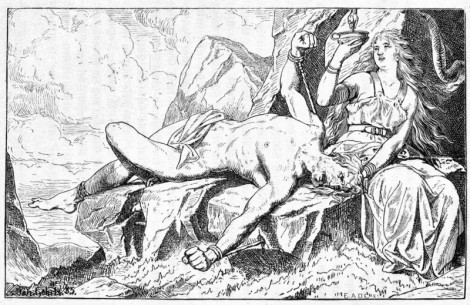 Loki tied to a rock, a snake drips venom upon him but his wife Sigyn tries to catch the drops.
Loki tied to a rock, a snake drips venom upon him but his wife Sigyn tries to catch the drops.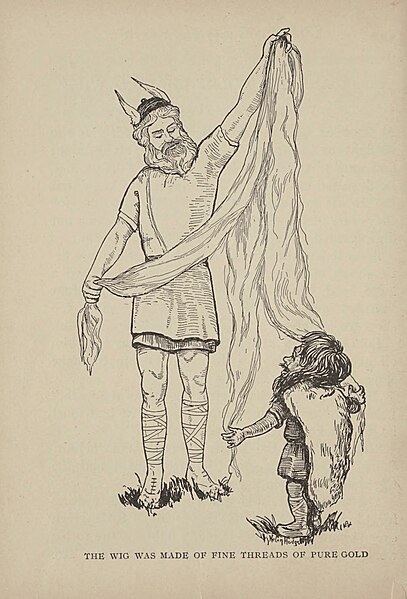 Loki and Dvalin
Loki and Dvalin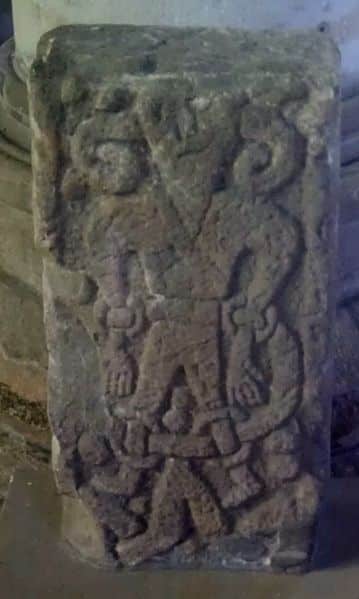 The Norse god Loki carved on a stone at Saint Stephen’s church, Kirkby Stephen, Cumbria, England.
The Norse god Loki carved on a stone at Saint Stephen’s church, Kirkby Stephen, Cumbria, England.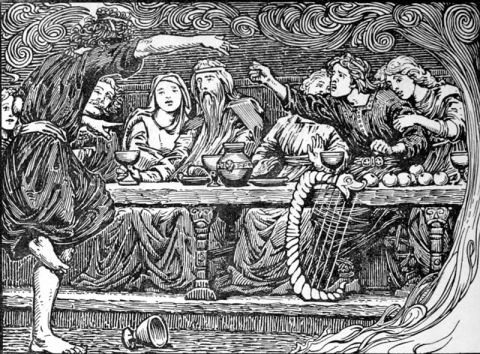 Loki taunts Bragi
Loki taunts Bragi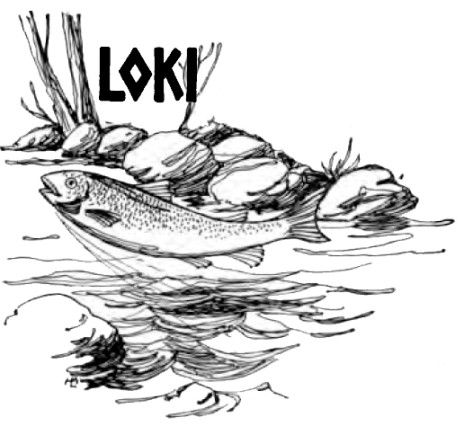 Loki as a salmon
Loki as a salmon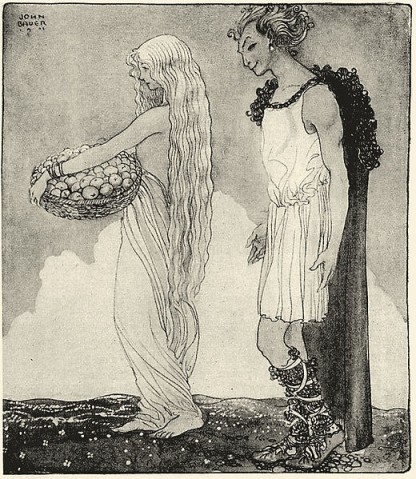 Loki and Idun
Loki and Idun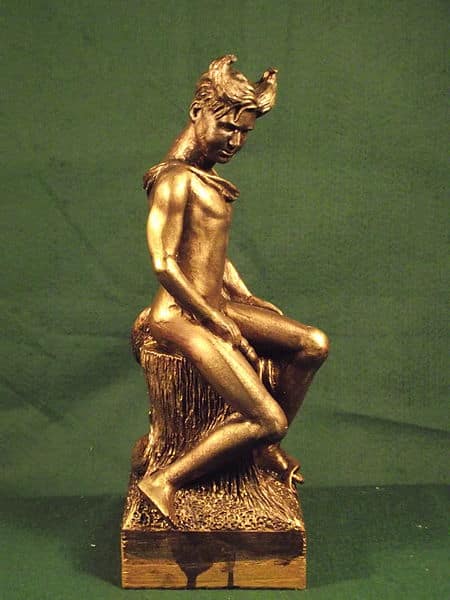 Loki. Composite constructed sculpture of historical figure(s) reputed to have had a same sex relationships
Loki. Composite constructed sculpture of historical figure(s) reputed to have had a same sex relationships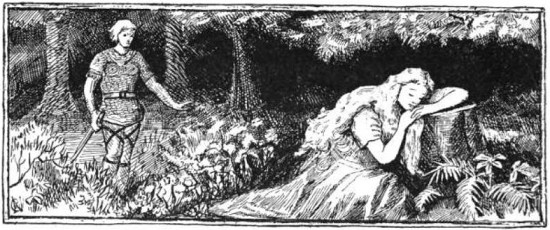 Loki and Sif
Loki and Sif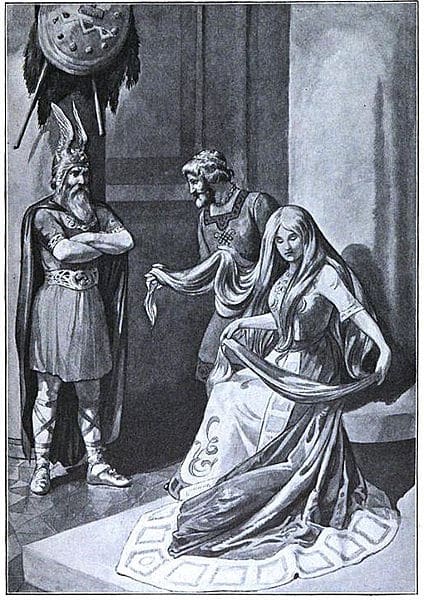 The Gold Hair that Loki Made
The Gold Hair that Loki Made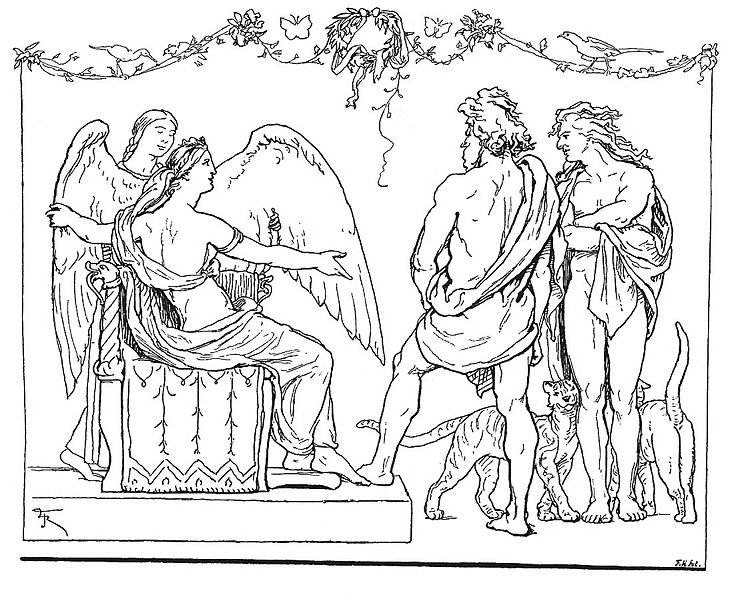 Freyja with servant and feather cloak and Thor and Loki
Freyja with servant and feather cloak and Thor and Loki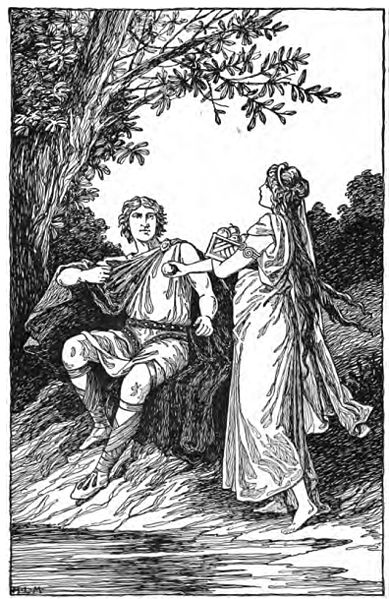 Iduna Giving Loki the Apple
Iduna Giving Loki the Apple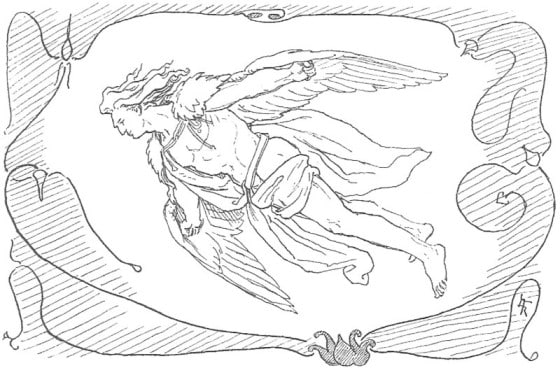 Loki in flight after borrowing Freyja’s feather cloak to retrieve Thor’s hammer Mjöllnir, as told in Þrymskviða.
Loki in flight after borrowing Freyja’s feather cloak to retrieve Thor’s hammer Mjöllnir, as told in Þrymskviða.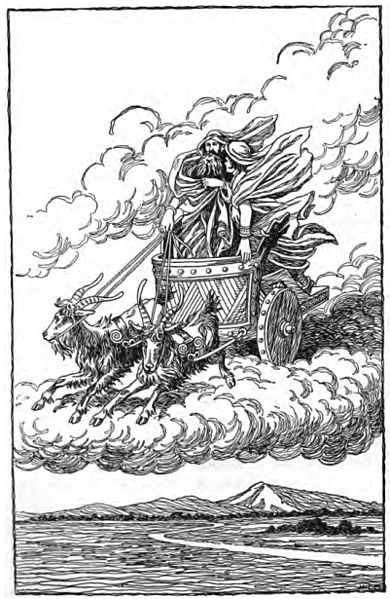 Thor and Loki in the Chariot
Thor and Loki in the Chariot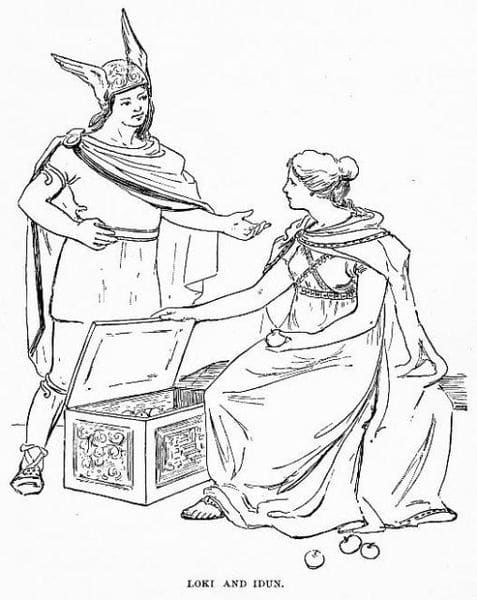 Loki and Idun
Loki and Idun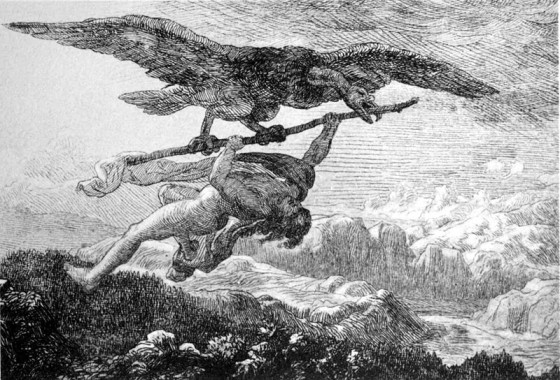 Loki and Þjazi
Loki and Þjazi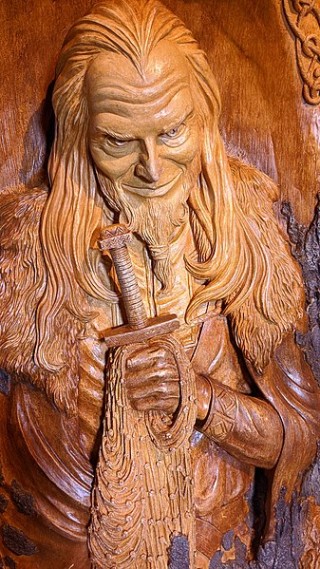 Loki at EPCOT’s Norway Pavilion.
Loki at EPCOT’s Norway Pavilion.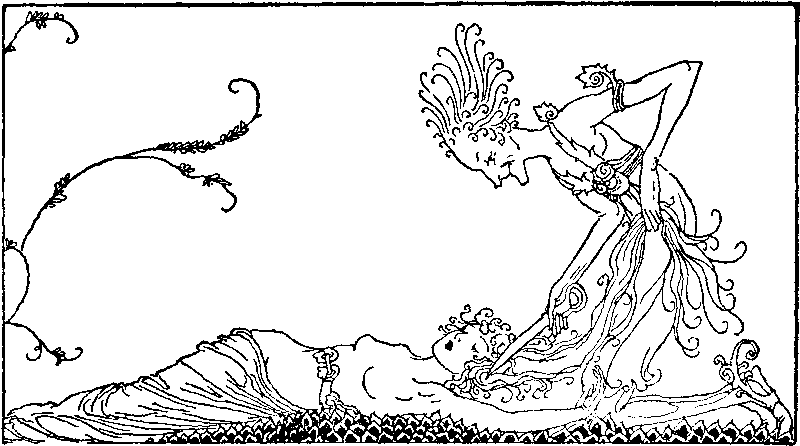 How Loki wrought mischief on Asgard (1920) by Willy Pogany
How Loki wrought mischief on Asgard (1920) by Willy Pogany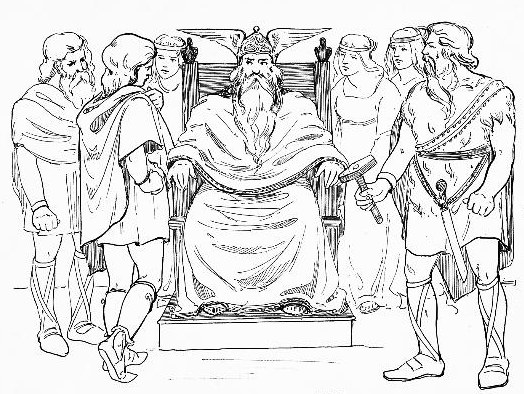 Thor, Loki and Another God
Thor, Loki and Another God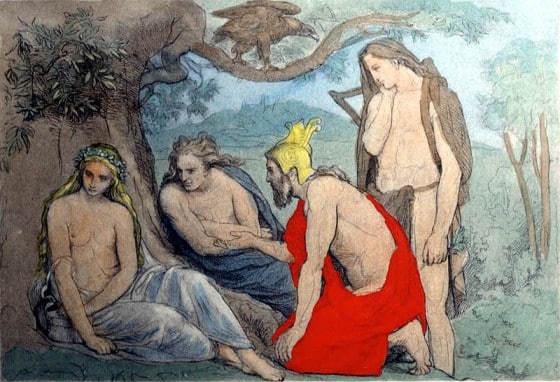 From left to right: Iðunn, Loki, Heimdallr and Bragi. Illustration of a scene from the poem Hrafnagaldr Óðins
From left to right: Iðunn, Loki, Heimdallr and Bragi. Illustration of a scene from the poem Hrafnagaldr Óðins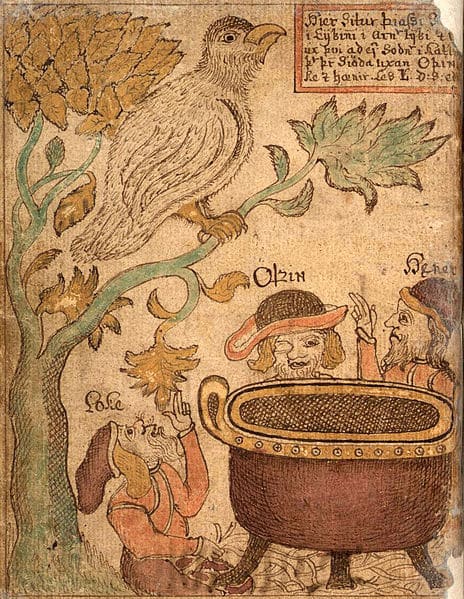 An illustration of the three gods Loki, Odin and Hœnir, as narrated in the skaldic poem Haustlöng, from an Icelandic 18th century manuscript.
An illustration of the three gods Loki, Odin and Hœnir, as narrated in the skaldic poem Haustlöng, from an Icelandic 18th century manuscript.
Play Fun Norse Quiz
Is this article making you even more curious about Norse gods and goddesses? You can satisfy your curiosity by playing a fun Norse mythology quiz. This way, you can test your knowledge about Norse gods and goddesses, as well as fill in some gaps. Good luck and have fun playing!
Don’t forget to try our other games as well!

